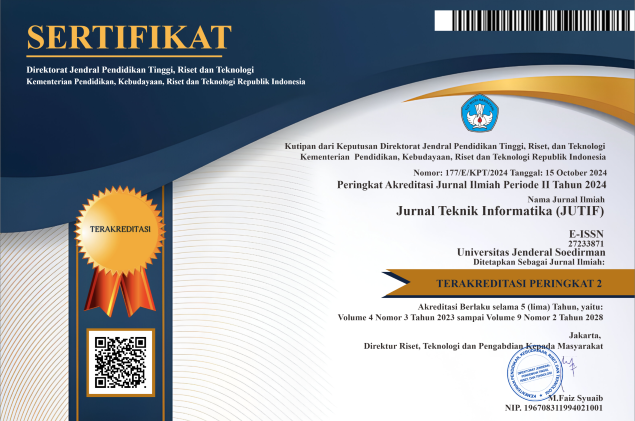Validation and Evaluation of Browser Forensics Using Digital Forensic Approach Based on the National Institute of Standards and Technology (NIST) Framework
DOI:
https://doi.org/10.52436/1.jutif.2025.6.4.4977Keywords:
browser privacy, digital forensics, Google Chrome, Mozilla Firefox, NIST SP 800-163r1Abstract
Browsers have become essential applications in digital life alongside the advancement of internet technology. However, users’ low awareness of privacy security during web browsing can lead to the risk of data theft by malicious parties. This study analyzes digital traces in Google Chrome and Mozilla Firefox using a digital forensic approach based on the standards of the National Institute of Standards and Technology (NIST). The method involves four testing scenarios to compare digital traces in storage media (hard drive) and RAM between normal and private/incognito browsing modes. The objective of this research is to validate and evaluate previous findings conducted on the Linux operating system, using a different approach within a Windows environment. The experiment uses the same digital forensic tools to ensure data accuracy. This study contributes to the advancement of browser forensics by presenting a validated and reproducible framework for memory-based privacy evaluation, thereby supporting more accurate and systematic analysis of digital traces.
Downloads
References
Ö. Önday, “Battle of Desktop Web Browsers: The Case of Internet Explorer and Mozilla Firefox,” J. Sci. Reports, vol. 2, no. 1, pp. 53–57, 2020, doi: 10.5281/zenodo.3731964.
W. Mahendra, I. Ramadhan, and U. Negeri, “Dua Dekade Trend Penelitian Kewarganegaraan Digital : Analisis Bibliometrik Database Scopus ( 2004-2024 ),” vol. 9, no. 1, pp. 88–107, 2025.
I. maulana, H. Rizqi Sanjaya, F. Setiyansyah, D. Righel Wibowo, and F. Sinlae, “Sistem Operasi Pada Komputer Yang Paling Banyak Digunakan,” J. Pengabdi. Multidisiplin, vol. 2, pp. 9–17, 2024, [Online]. Available: https://ejournal.cvrobema.com/index.php/aremben/article/view/49
X. Fernández-Fuentes, T. F. Pena, and J. C. Cabaleiro, “Digital forensic analysis methodology for private browsing: Firefox and Chrome on Linux as a case study,” Comput. Secur., vol. 115, Apr. 2022, doi: 10.1016/j.cose.2022.102626.
U. Hur, S. Kang, G. Kim, and J. Kim, “A study on cloud data access through browser credential migration in Windows environment,” Forensic Sci. Int. Digit. Investig., vol. 45, p. 301568, 2023, doi: 10.1016/j.fsidi.2023.301568.
R. R. Chand, N. A. Sharma, and M. A. Kabir, “Advancing Web Browser Forensics: Critical Evaluation of Emerging Tools and Techniques,” SN Comput. Sci., 2024, doi: 10.1007/s42979-025-03921-6.
G. Choi, J. Bang, S. Lee, and J. Park, “Chracer: Memory analysis of Chromium-based browsers,” Forensic Sci. Int. Digit. Investig., vol. 46, no. S, p. 301613, 2023, doi: 10.1016/j.fsidi.2023.301613.
X. Fernández-Fuentes, T. F. Pena, and J. C. Cabaleiro, “Digital forensic analysis methodology for private browsing: Firefox and Chrome on Linux as a case study,” Comput. Secur., vol. 115, 2022, doi: 10.1016/j.cose.2022.102626.
X. Fernández-Fuentes, T. F. Pena, and J. C. Cabaleiro, “Digital forensic analysis of the private mode of browsers on Android,” Comput. Secur., vol. 134, no. November 2022, p. 103425, 2023, doi: 10.1016/j.cose.2023.103425.
F. Iqbal, Z. Khalid, A. Marrington, B. Shah, and P. C. K. Hung, “Forensic investigation of Google Meet for memory and browser artifacts,” Forensic Sci. Int. Digit. Investig., vol. 43, p. 301448, 2022, doi: 10.1016/j.fsidi.2022.301448.
S. Kauser, T. S. Malik, M. H. Hasan, E. A. P. Akhir, and S. M. H. Kazmi, “Windows 10’s Browser Forensic Analysis for Tracing P2P Networks’ Anonymous Attacks,” Comput. Mater. Contin., vol. 72, no. 1, pp. 1251–1273, 2022, doi: 10.32604/cmc.2022.022475.
D. Kim, S. Oh, and T. Shon, “Digital forensic approaches for metaverse ecosystems,” Forensic Sci. Int. Digit. Investig., vol. 46, Oct. 2023, doi: 10.1016/j.fsidi.2023.301608.
B. Pribadi, S. Rosdiana, and S. Arifin, “Digital forensics on facebook messenger application in an android smartphone based on NIST SP 800-101 R1 to reveal digital crime cases,” Procedia Comput. Sci., vol. 216, no. 2022, pp. 161–167, 2023, doi: 10.1016/j.procs.2022.12.123.
Imam Riadi, Rusydi Umar, and M. I. Syahib, “Akuisisi Bukti Digital Viber Messenger Android Menggunakan Metode National Institute of Standards and Technology (NIST),” J. RESTI (Rekayasa Sist. dan Teknol. Informasi), vol. 5, no. 1, pp. 45–54, Feb. 2021, doi: 10.29207/resti.v5i1.2626.
M. Mu’Minin and N. Anwar, “Live Data Forensic Artefak Internet Browser (Studi Kasus Google Chrome, Mozilla Firefox, Opera Mode Incognito),” Bul. Sist. Inf. dan Teknol. Islam, vol. 1, no. 3, pp. 130–138, 2020, doi: 10.33096/busiti.v1i3.834.
F. B. Riadi, Imam, Muthohirin, “Forensik Digital (Forensik Email),” pp. 1–23, 2022.
M. Syukri, I. Riadi, and T. Sutikno, “Jurnal Processor Analisis Forensik Keamanan Data Pribadi pada Mode Privasi Browser Menggunakan Metode National Institute of Standards and Technology,” vol. xx, no. xx, pp. 1–11, 2024.
N. N. Qonita, M. R. Handayani, and K. Umam, “Digital Forensic Chatbot Using DeepSeek LLM and NER for Automated Electronic Evidence Investigation,” vol. 6, no. 3, pp. 1203–1216, 2025.
E. L. Romsos, C. (Becky) R. Steffen, L. A. Borsuk, S. Riman, K. M. Kiesler, and P. M. Vallone, “Collaborative use of the NIST Research Grade Test Material (RGTM) 10235: Forensic DNA Typing Resource Samples,” Forensic Sci. Int. Synerg., vol. 8, p. 100505, 2024, doi: 10.1016/j.fsisyn.2024.100505.
V. H. V. Suhardjono, Arman Syah Putra, Nurul Aisyah, “Analysis of NIST Methods on Facebook Messenger for Forensic Evidance,” J. Innov. Res. Knowl., vol. 1, no. 10, p. 8, 2022, doi: 10.53625/jirk.v1i8.1122.
R. N. Bintang, R. Umar, and A. Yudhana, “Assess of Forensic Tools on Android Based Facebook Lite with the NIST Method,” Sci. J. Informatics, vol. 8, no. 1, pp. 1–9, 2021, doi: 10.15294/sji.v8i1.26744.
F. Yasin, Abdul Fadlil, and Rusydi Umar, “Identifikasi Bukti Forensik Jaringan Virtual Router Menggunakan Metode NIST,” J. RESTI (Rekayasa Sist. dan Teknol. Informasi), vol. 5, no. 1, pp. 91–98, 2021, doi: 10.29207/resti.v5i1.2784.
Imam Riadi, Abdul Fadlil, and Muhammad Immawan Aulia, “Investigasi Bukti Digital Optical Drive Menggunakan Metode National Institute of Standard and Technology (NIST),” J. RESTI (Rekayasa Sist. dan Teknol. Informasi), vol. 4, no. 5, pp. 820–828, 2020, doi: 10.29207/resti.v4i5.2224.
Imam Riadi, Rusydi Umar, and M. I. Syahib, “Akuisisi Bukti Digital Viber Messenger Android Menggunakan Metode National Institute of Standards and Technology (NIST),” J. RESTI (Rekayasa Sist. dan Teknol. Informasi), vol. 5, no. 1, pp. 45–54, 2021, doi: 10.29207/resti.v5i1.2626.
S. Marcellino, H. B. Seta, and I. W. Widi, “Analisis Forensik Digital Recovery Data Smartphone pada Kasus Penghapusan Berkas Menggunakan Metode National Institute of Justice (NIJ),” Inform. J. Ilmu Komput., vol. 19, no. 2, pp. 141–156, 2023, doi: 10.52958/iftk.v19i2.4676.
A. Dan, P. Bukti, F. Digital, A. Media, S. Twitter, and M. Metode, “Analisa dan pencarian bukti forensik digital pada aplikasi media social twitter menggunakan metode national institute standard of technology,” pp. 24–33, 1979.
Additional Files
Published
How to Cite
Issue
Section
License
Copyright (c) 2025 Muhammad Syukri, Imam Riadi, Tole Sutikno

This work is licensed under a Creative Commons Attribution 4.0 International License.



























